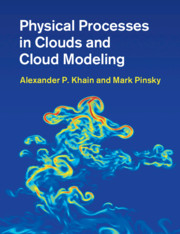Book contents
- Physical Processes in Clouds and Cloud Modeling
- Physical Processes in Clouds and Cloud Modeling
- Copyright page
- Contents
- Preface
- Abbreviations
- Symbols
- 1 Clouds: Definitions and Significance
- 2 Cloud Particles and Their Representation in Cloud Models
- 3 Basic Equations
- 4 Numerical Methods Used in Cloud Models
- 5 Warm Microphysical Processes
- 6 Microphysical Processes in Ice and Mixed-Phase Clouds
- 7 Modeling: A Powerful Tool for Cloud Investigation
- Book part
- Index
- References
7 - Modeling: A Powerful Tool for Cloud Investigation
Published online by Cambridge University Press: 22 August 2018
- Physical Processes in Clouds and Cloud Modeling
- Physical Processes in Clouds and Cloud Modeling
- Copyright page
- Contents
- Preface
- Abbreviations
- Symbols
- 1 Clouds: Definitions and Significance
- 2 Cloud Particles and Their Representation in Cloud Models
- 3 Basic Equations
- 4 Numerical Methods Used in Cloud Models
- 5 Warm Microphysical Processes
- 6 Microphysical Processes in Ice and Mixed-Phase Clouds
- 7 Modeling: A Powerful Tool for Cloud Investigation
- Book part
- Index
- References
Summary
Information
- Type
- Chapter
- Information
- Physical Processes in Clouds and Cloud Modeling , pp. 497 - 594Publisher: Cambridge University PressPrint publication year: 2018
